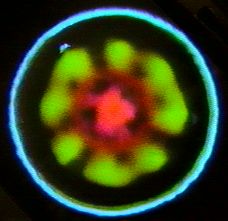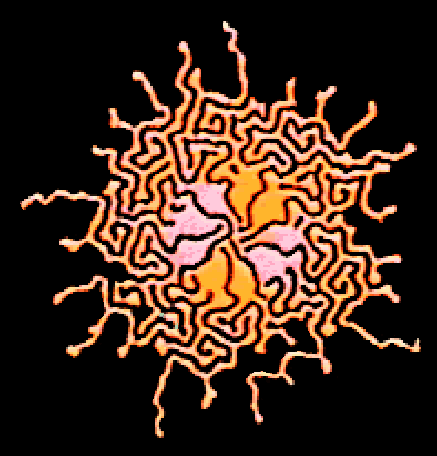Video Feedback
 | ||
One thing I must emphasize up front is that the images you'll find here were all formed inside a video feedback loop. They were not imposed from the outside in any way. They are examples of self-organized pattern formation, a natural process used by all living things to create structure. On this page, I've placed a few sample images to give you a feel for what is possible with video feedback. The main gallery, entitled The Mixer, has over 100 images.
|



Spirals
|



Flowers
|

Fingerprints and Labyrinths
|

Chaotic Oscillations
This would make a great high-school science project. :-)
|

Fractals
|

The Mixer
|

Etc.
Also, here is a mathematical model called Xmorphia, which is a reaction-diffusion system that generates patterns somewhat similar to those seen here (but much more slowly!).
|
Acknowledgements
